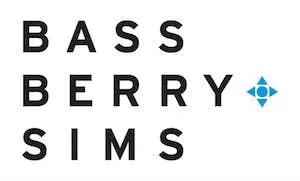If you are part of a heavily regulated—or heavily litigated—industry, at some point, you or your company are likely to receive a third-party subpoena.
This post offers guidance on how to respond to this common discovery tool.
What Is a Third-Party Subpoena?
A subpoena is a tool that parties to litigation can use to obtain documents and other information from persons or entities who are not a part of the case but may have documents or information relevant to the case. A subpoena functions like a Civil Investigative Demand, a tool the government often uses during False Claims Act investigations, but it is issued by private parties involved in civil litigation. We have previously covered how to respond to a Civil Investigative Demand.
Federal and state rules of civil procedure typically allow parties to issue third-party subpoenas during the discovery phase of litigation. Rule 45 of the Federal Rules of Civil Procedure, the discovery rule used by federal litigants, exemplifies the types of documents and information that can be sought through a subpoena, though each state's rules vary. Rule 45 allows a party to command that a third party do any or all of the following:
- Attend and testify at a deposition or other proceeding.
- Produce documents or other property in the recipient's possession.
- Permit inspection of a premises.
A subpoena to produce "designated" documents, a commonly issued type of subpoena, will often come with a list of document requests identifying categories of documents the issuing party is seeking. Sometimes it may be obvious from the document requests or the names of the parties what the litigation is about and how the recipient relates to the litigation. Other times, the recipient may have no prior relationship with the issuing party, and the relevance of the requested documents might not be apparent.
Those responding to a third-party subpoena must consider complying appropriately with the subpoena while minimizing the cost associated with the response and any risk from the production of documents and information to third parties.
Experienced counsel can help you communicate with counsel for the issuing party, understand the case in which the subpoena is issued, ascertain why you have been subpoenaed, and determine the best strategy for objecting or responding to the subpoena.
Protections for Third-Parties Who Receive a Subpoena
Subpoenas are compulsory documents, meaning the recipient must respond to and comply with the subpoena. And unfortunately for recipients, there are limited mechanisms for recouping the costs associated with a response—subpoena recipients often shoulder most or all of the financial burden and disruption caused by responding. It is often a shock to the subpoena recipient that they can be forced to incur such expense because of litigation ongoing between other parties. But recipients have little choice: courts can enforce subpoenas through fines and other means, including holding a non-responsive recipient in contempt of court.
Receiving a subpoena can be unavoidable, and responding to one is often a cost of doing business. That said, courts and the rules of civil procedure try to limit the burden on subpoena recipients. For example, there are some limitations on how far a recipient can be required to travel or send documents to comply with a subpoena.
Generally, the issuing party "must take reasonable steps to avoid imposing undue burden or expense on a person subject to the subpoena," though this can be a subjective and sometimes disputed standard. A subpoena recipient has the right to object to the requests, but there is a limited time window for doing so. Such objections might include that complying with the subpoena is too burdensome or expensive, that the documents aren't relevant to the case, or that the documents are protected from disclosure by the attorney-client or another privilege.
In extreme circumstances, a subpoena recipient may need the court to intervene to limit their response if the issuing party and recipient cannot reach agreement. The recipient may thus move the court to modify the subpoena or "quash" it entirely. Conversely, the issuing party can move the court to compel a response to the subpoena if it believes the recipient is not complying.
How to Respond to a Subpoena
Even if a subpoena seems narrow, recipients should strongly consider consulting with counsel about how to respond. The response to a subpoena for documents often includes:
- Consulting with counsel to discuss why you might have received the subpoena and to develop a plan for responding.
- Researching the underlying litigation.
- Identifying relevant sources and custodians for responsive documents and possibly implementing a legal hold to preserve relevant documents.
- Contacting the party or counsel who issued the subpoena to understand what they are seeking and to negotiate any limitations on the scope and timing of your response.
- Serving written objections to the document requests.
- Analyzing potential risks from the production of documents or information.
- Collecting and producing responsive paper and electronic documents and communications.
Recipients of a subpoena to appear and testify at a deposition, hearing, or trial are especially well advised to be represented by counsel in complying with the subpoena. In addition to the steps outlined above, recipients of such a subpoena should learn the process of a deposition or hearing, understand how to respond to questions accurately, anticipate what topics or documents they may be asked about, and discuss whether they can submit an affidavit instead of giving live testimony.
The content of this article is intended to provide a general guide to the subject matter. Specialist advice should be sought about your specific circumstances.

